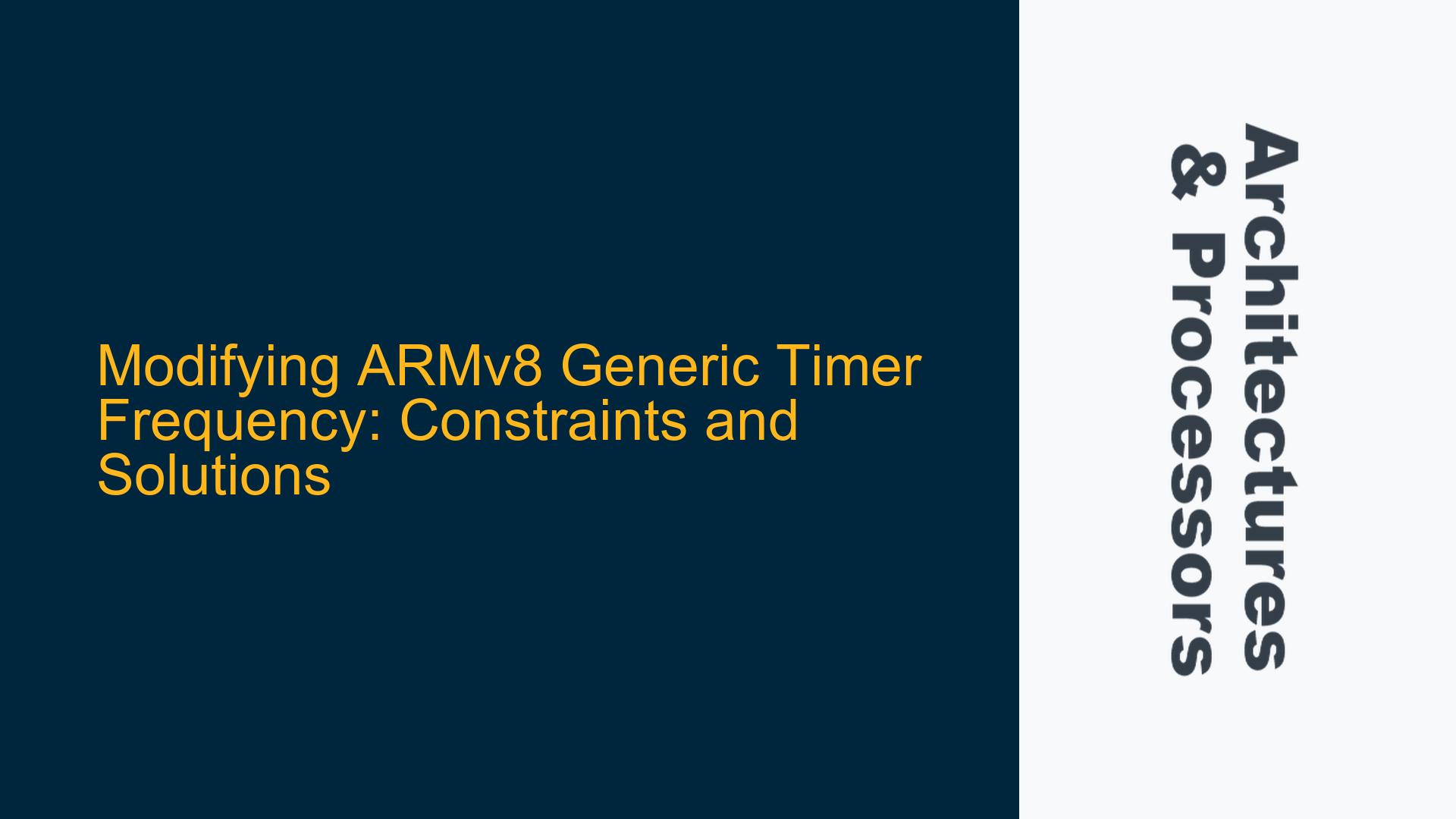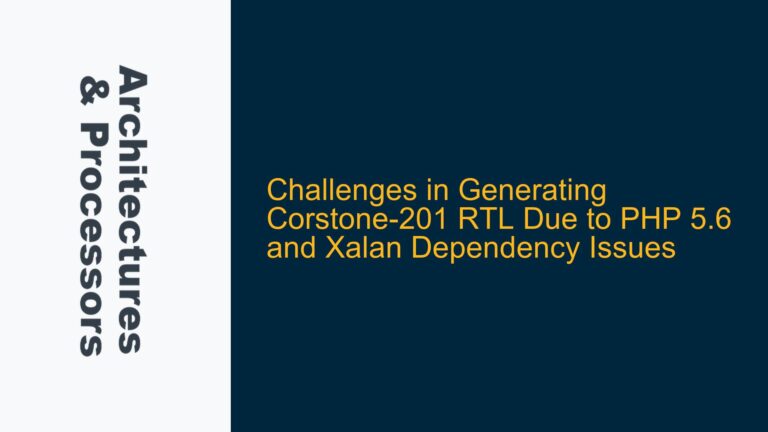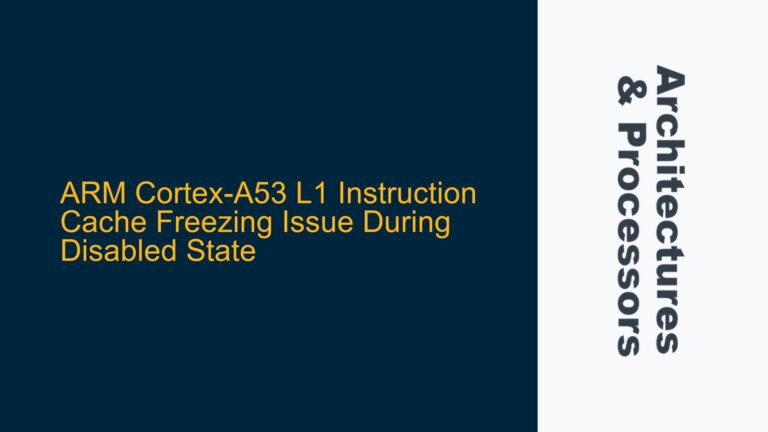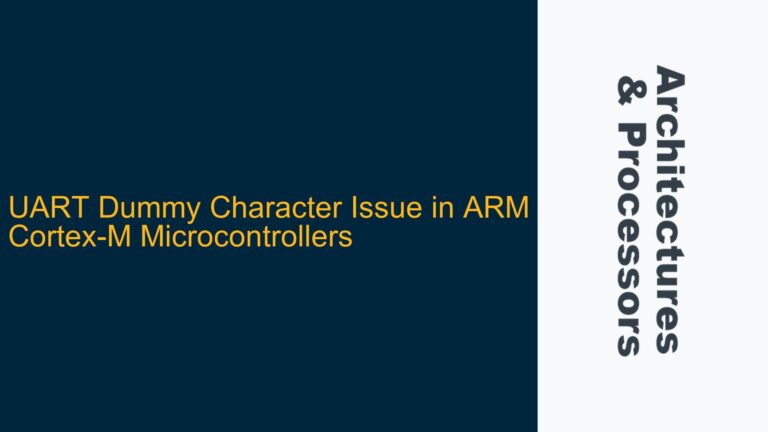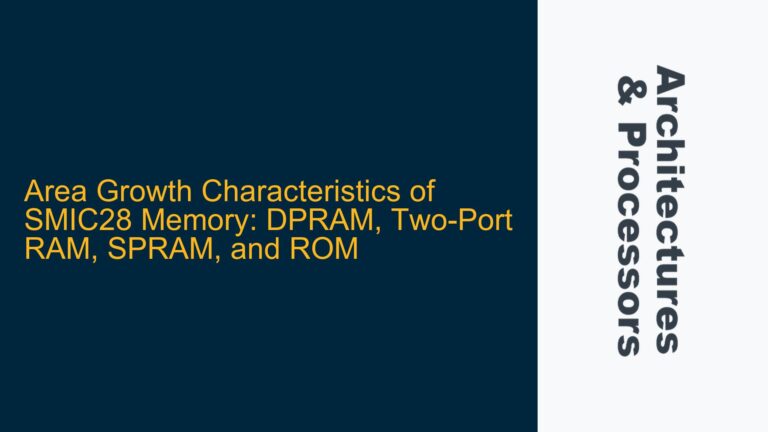ARMv8 Generic Timer Frequency Configuration and CNTFRQ_EL0 Role
The ARMv8 architecture incorporates a generic timer system that provides a consistent timekeeping mechanism across different implementations. The generic timer’s frequency is a critical parameter that influences the accuracy and resolution of timing operations. The frequency is typically set within a range of 1MHz to 50MHz, as specified in the ARM architecture reference manual. The CNTFRQ_EL0 register plays a pivotal role in this context, as it communicates the current frequency of the generic timer to the operating system and applications running at EL1 and EL0.
CNTFRQ_EL0 is a read-only register for software executing at EL1 and EL0, meaning that these privilege levels cannot directly modify the timer frequency. Instead, the frequency is usually determined and set by firmware running at EL3 or by the boot loader during the early stages of system initialization. This design ensures that the timer frequency remains stable and consistent across different execution levels, preventing potential conflicts or inconsistencies that could arise if lower privilege levels were allowed to alter the frequency.
The generic timer’s frequency is derived from a system counter, which is driven by a clock source specific to the System-on-Chip (SoC) implementation. The clock source and its frequency are typically fixed by the hardware design, although some SoCs may provide mechanisms to adjust the clock frequency under specific conditions. However, such adjustments are generally restricted to privileged software running at EL3 or secure firmware, as they require access to hardware control registers that are not accessible from lower privilege levels.
SoC-Specific Timer Frequency Constraints and EL3 Control
The ability to modify the generic timer frequency is heavily dependent on the specific SoC implementation. In most cases, the timer frequency is fixed by the hardware design and cannot be changed by software. This is because the timer frequency is often tied to other system components and peripherals, and changing it could disrupt the overall system operation. For example, altering the timer frequency might affect the timing of interrupt handling, DMA transfers, or other time-sensitive operations.
In systems that implement EL3, the secure firmware running at this privilege level is responsible for initializing and configuring the generic timer. This includes setting the CNTFRQ_EL0 register to reflect the actual timer frequency. Once set, the frequency is typically locked and cannot be modified by software running at lower privilege levels. This ensures that the timer frequency remains consistent and predictable, which is essential for maintaining system stability and performance.
In some cases, the boot loader may also play a role in setting the timer frequency. During the boot process, the boot loader initializes the hardware and configures the system counter before handing control over to the operating system. If the boot loader sets the CNTFRQ_EL0 register, the operating system and applications will use this value as the reference frequency for all timing calculations. However, the boot loader itself does not have the capability to change the underlying clock source frequency; it can only report the frequency that has been set by the hardware or secure firmware.
Implementing Timer Frequency Adjustments and System Stability Considerations
While the generic timer frequency is typically fixed, there are scenarios where it may be necessary or desirable to adjust the frequency. For example, in power-sensitive applications, reducing the timer frequency can help lower power consumption by slowing down the system counter. Conversely, increasing the timer frequency can improve the resolution and accuracy of timing operations, which may be important for real-time applications.
However, modifying the timer frequency is not a straightforward task and requires careful consideration of the system architecture and hardware constraints. In systems where the timer frequency can be adjusted, this is usually done by modifying the clock source that drives the system counter. This requires access to privileged control registers, which are typically only accessible from EL3 or secure firmware. Even then, changing the clock frequency may have unintended consequences, such as disrupting other system components that rely on the same clock source.
To implement timer frequency adjustments, the following steps are typically required:
-
Accessing Privileged Control Registers: The first step is to gain access to the control registers that govern the clock source and system counter. This usually requires executing code at EL3 or using a secure firmware interface to modify the hardware configuration.
-
Modifying the Clock Source Frequency: Once access to the control registers is obtained, the clock source frequency can be adjusted. This may involve changing the settings of a phase-locked loop (PLL), divider, or other clock generation circuitry. The specific steps depend on the SoC implementation and the available hardware features.
-
Updating CNTFRQ_EL0: After modifying the clock source frequency, the CNTFRQ_EL0 register must be updated to reflect the new timer frequency. This ensures that the operating system and applications have accurate information about the timer’s configuration.
-
Validating System Stability: Finally, it is essential to validate that the system remains stable and functional after changing the timer frequency. This includes testing the timing of critical operations, such as interrupt handling, task scheduling, and peripheral communication, to ensure that they are not adversely affected by the frequency adjustment.
In conclusion, while the ARMv8 generic timer frequency is typically fixed by the hardware design, there are scenarios where it may be possible to adjust the frequency under controlled conditions. However, this requires a deep understanding of the system architecture, access to privileged control registers, and careful validation to ensure system stability. For most applications, it is recommended to use the timer frequency as set by the hardware or firmware, and to design software that is robust to variations in timing resolution and accuracy.
